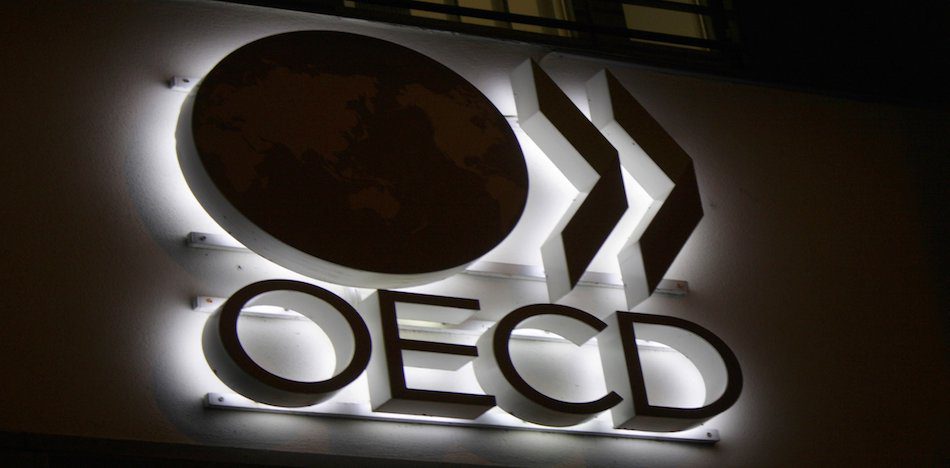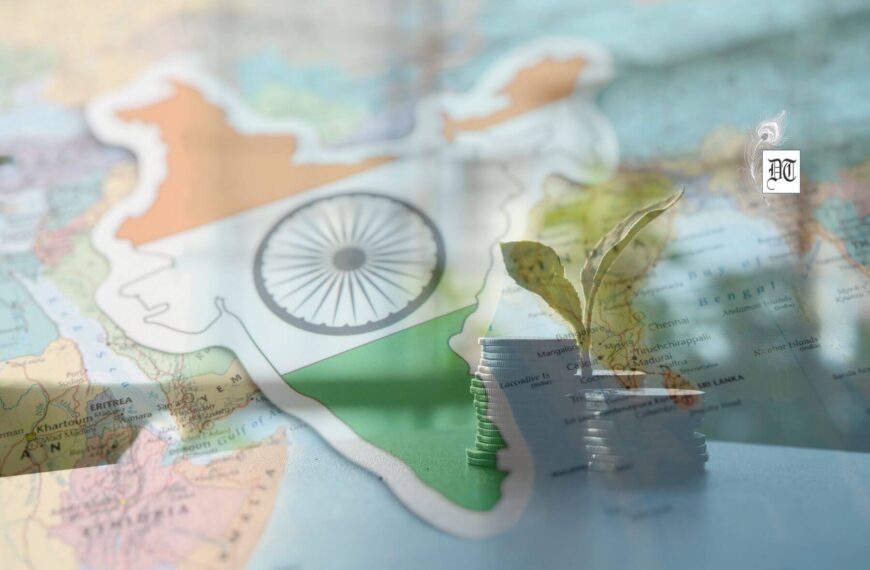It has been reported in the Agricultural Outlook 2018-2027, prepared jointly by the Organisation for Economic Cooperation and Development (OECD) and Food and Agriculture Organisation (FAO) of the United Nations. It says that much of the additional food demand will originate from India, Sub-Saharan Africa, North Africa, and the Middle East due to high population growth and per capita consumption consequently changing the demand pattern and influencing the international agricultural market. The demand for feed will continue to outpace food demand as livestock population intensifies in the coming decade. An analysis, for Different Truths.
While India’s policy may impact domestic production more than the global agricultural market, China’s policies, in particular regarding cereals, are likely to affect global markets in the next ten years through price movements, stock releases and import regulations. It will be mainly because India will surpass China in economic growth rate registering 8.1 percent as against China’s 5.8 percent, per capita income 6.3 percent as against China’s 5.9 percent, and in population with an additional 138 million people to become world’s most populous country by 2027 consequently increasing India’s per capita consumption and demand for food for human beings and feed for animals.
It has been reported in the Agricultural Outlook 2018-2027, prepared jointly by the Organisation for Economic Cooperation and Development (OECD) and Food and Agriculture Organisation (FAO) of the United Nations. It says that much of the additional food demand will originate from India, Sub-Saharan Africa, North Africa, and the Middle East due to high population growth and per capita consumption consequently changing the demand pattern and influencing the international agricultural market. The demand for feed will continue to outpace food demand as livestock population intensifies in the coming decade. Yet, compared with the previous decade, the demand growth for feed will slow down.
Population and rise in income will spur demand for food in the developing world. India and Sub-Saharan Africa will account for a large share of the additional food demand for cereals. Consumption of dairy products and vegetable oil in India will underpin growth in these commodities.
China will continue to account for a large share of demand growth in meat and fish. In India, dietary preferences translate rising incomes into an increased per capita demand for dairy as preferred animal protein rather than meat. Total global consumption of meat and fish is expected to increase by 15 percent while per capita consumption by only 3 percent. Per capita consumption growth in India is expected to rise by 12 per cent. World meat production increased by 1.2 percent in 2017, much of which was originated in the United States. However, India was also one of the main contributors to the growth along with Argentina, China, Mexico, the Russian Federation and Turkey.
Nevertheless, the dominance of fresh dairy products will increase in the coming decade with 2.2 percent growth per annum in consumption, the highest growth rate among the commodities covered in the Agricultural Outlook. This increase can be attributed largely to India where dairy is an integral component of the diet. The demand is going to rise strongly also in Ukraine and Kazakhstan from already high levels. Developing countries are increasingly consuming fresh dairy products where per capita rise will be 8.4 kg by 2027, but per capita consumption will fall by 1.7 kg in developed countries as consumers there are continuing to shift towards processed dairy products, such as milk powders, cheese, and butter. A growing preference for butter in higher-income countries has been attributed in part to changing perceptions of the health implications of consuming dairy fat. Despite strong price movements in the past year, global demand for butter is expected to grow at nearly 2.2 percent per annum. This growth will be supported by high and expanding consumption in India. World milk production is projected to increase by 22 percent with a large share from India and Pakistan, which will jointly account for 32 percent of the global production.
Relatively high growth rates are also expected for sugar and vegetable oil, as urbanisation in developing countries leads to greater demand for convenience foods typically characterized by a higher sugar and oil content. Most of the additional demand for sugar will originate from the developing world which will be around 94 per cent. Around 60 per cent of the demand will be from Asia and 25 percent from Africa, which are the two largest sugar-importing regions. Per Capita consumption is projected to grow by 2.4 kg in India, 2.5 kg in China, and 2.9 kg in the Middle East and North Africa. Brazil is projected to remain the largest producer of sugarcane and sugar beet with strong growth prospects foreseen in India, China, and Thailand. Use of vegetable oil is projected to increase globally from 21 to 23 kg per capita mainly due to increase in consumption in the developing world which will also register expansion in overall agricultural production, but sustainability concerns may impose constraints.
India’s agricultural policies are focused primarily on stimulating agricultural growth in order to meet  domestic food security. South and East Asia is the world’s main producer for an array of agricultural products. It produces almost 40 percent of cereals including nearly 90 per cent of global rice output, close to 40 percent of global meat production, more than half of the vegetable oil supplies, and nearly 70 percent of global fish production. The coming decade is likely to add new challenges, in particular, the need to reconcile high output levels with the increasingly stringent standard for sustainable production. Nevertheless, the region will register the rise in yield and production. Yield growth in the next decade will be 10 per cent for wheat, 12 percent for maize and rice, 15 percent for cotton and 20 percent for soybeans. Oilseed yields and production are set to rise strongly in India. Thailand, India, and Viet Nam are expected to remain the major suppliers on the international rice market, while Cambodia and Myanmar are projected to capture a greater share of the global export market.
domestic food security. South and East Asia is the world’s main producer for an array of agricultural products. It produces almost 40 percent of cereals including nearly 90 per cent of global rice output, close to 40 percent of global meat production, more than half of the vegetable oil supplies, and nearly 70 percent of global fish production. The coming decade is likely to add new challenges, in particular, the need to reconcile high output levels with the increasingly stringent standard for sustainable production. Nevertheless, the region will register the rise in yield and production. Yield growth in the next decade will be 10 per cent for wheat, 12 percent for maize and rice, 15 percent for cotton and 20 percent for soybeans. Oilseed yields and production are set to rise strongly in India. Thailand, India, and Viet Nam are expected to remain the major suppliers on the international rice market, while Cambodia and Myanmar are projected to capture a greater share of the global export market.
South and East Asia will remain a major global supplier of meat and dairy commodities accounting 39 and 44 percent of global output by 2027. Dairy production is set to expand by 41 percent with butter by 44 percent and milk by 40 percent. Meat production will grow by 18 percent. China, India, and Thailand will lead the output growth of poultry and sheep meat.
India will remain the world’s largest cotton producing country and will become the world’s largest country for cotton mill consumption. However, the United States will remain the world’s main exporter accounting for 36 percent of global exports. Globally, per capita, cereals consumption will increase by less than 2 percent.
Due to the increase in livestock population, the global demand for feed will also rise. Around 30 percent of the additional demand will originate in China where feed demand is expected to grow by 25 percent over the next decade. In India, it will be 31 per cent, in the Middle East and North Africa 29 percent and Brazil 25 percent. The growth rate in the European Union and the United States will be considerably lower at 0.4 and 11 percent respectively.
Gyan Pathak
©IPA Service
Photo from the Internet





 By
By

 By
By
 By
By